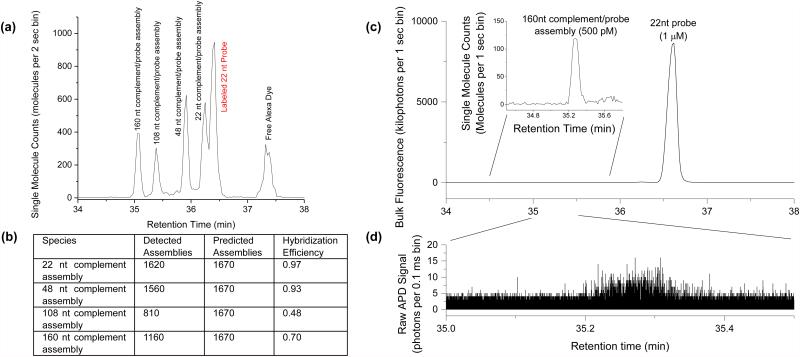Figure 6.
Hybridization of a fluorescently tagged single stranded probe to a complementary oligo is accompanied by a relative mobility shift. (a) Equal ratios of four complementary targets (lengths 22 nt, 48 nt, 108 nt, and 160 nt) are combined with a 22 nt ssDNA probe at five-times higher concentration and separated. (b) The hybridization efficiency of the competing hybridization reactions in (a) is calculated by comparing the quantity of a detected assemblies (determined by single molecule counting) with the number predicted (determined from the input ratios and the total number of fluorescent molecules present). (c) Separation and detection of the 160 nt complement/probe assembly (inset) in 2000-fold excess concentration of labeled probe. (d) The raw APD trace of the single fluorophore bursts that correspond to the hybridized 160 nt complement/probe assembly.

